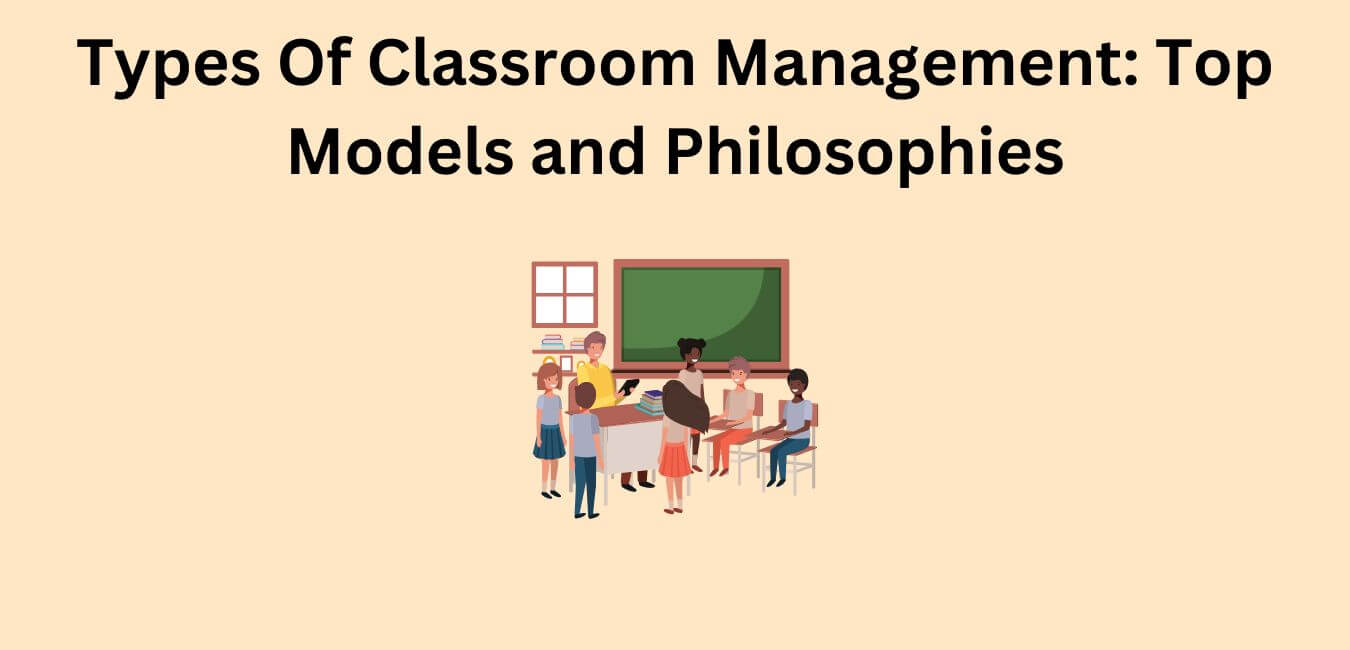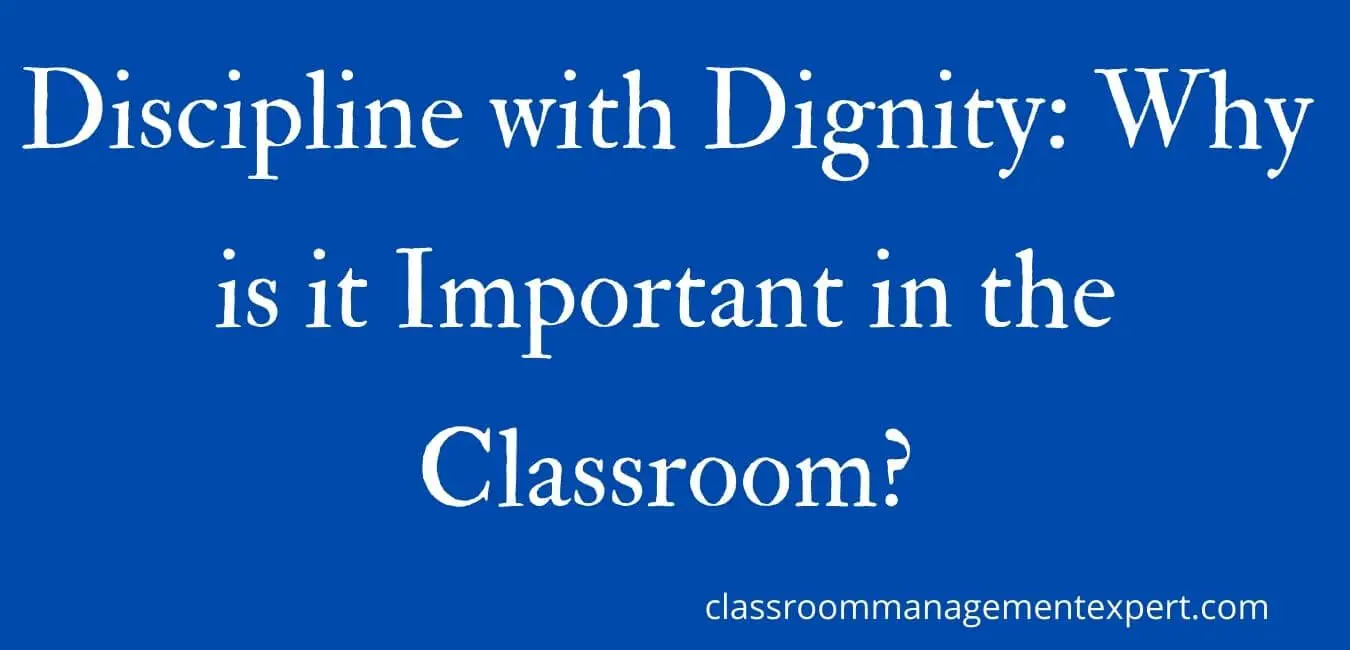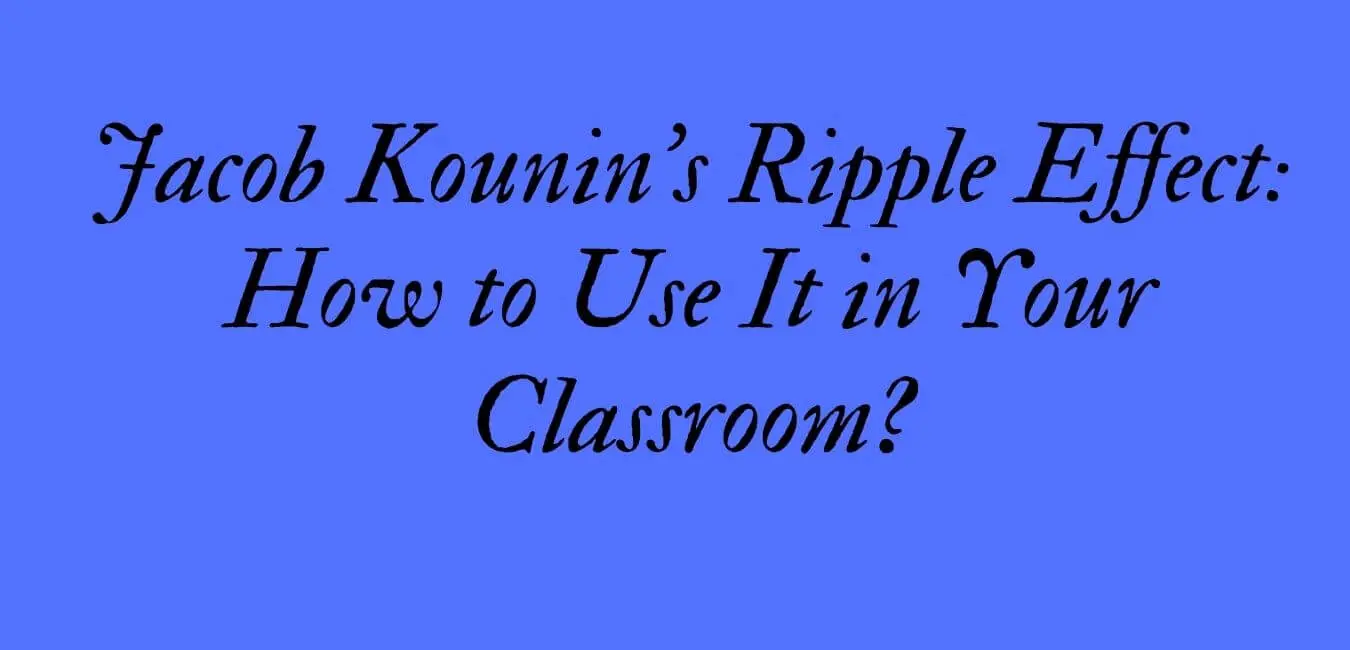Classroom management is an essential aspect of education that allows teachers to create a well-structured learning environment that maximizes student learning. There are many different approaches to classroom management, each with its unique advantages and disadvantages. With so many options to choose from, it can be challenging to know where to start.
In this blog post, we will discuss the top 10 models of classroom management, exploring what each model involves, and how it can benefit the classroom.
Whether you’re a new teacher or a seasoned pro, this guide will help you find the right approach to classroom management that suits your teaching style and meets the needs of your students.
So, let’s dive in and explore the different types of classroom management.
Top Models of Classroom Management
1. Kernel-based Classroom Management Strategies
Kernel-based classroom management strategies are a research-based approach to enhance responsible decision-making and increase academic learning time.
These strategies are fundamental units of behavioral influence known to be highly effective measures, validated by empirical evidence and teacher experience.
Kernels can offer useful approaches to classroom management, particularly at the beginning of the year, before educators have had a chance to develop deeper relationships with their students. Teachers use kernels intuitively, as they require neither special training nor expensive consultants to implement effectively.
Kernels are powerful because they cue self-awareness, self-regulation, and pro-academic dispositions through the use of subtle body movements, explicit hand signals, nonverbal or verbal cues, timeouts, over-correction, notes of praise, private reminders, greetings, and more.
By consistently applying these strategies, teachers can promote a positive classroom environment that enhances learning and fosters growth and development. [1][2]
2. Traditional Assertion Techniques
Traditional assertion techniques refer to the style of classroom management that was commonly practiced by teachers during the mid-1900s. This method involved the teacher using their authoritative stance to gain control over the class.
However, this approach did not work for very long and began to fade away gradually. With the advent of research in the field of education, it was discovered that there was a need for a more systematic and psychological approach to classroom management.
Over time, researchers came up with seven models of discipline, which formed the basis for the development of new models by other scholars. Traditional assertion techniques entail the teacher taking charge of the class, without considering the individual needs of the students.
This can result in a lack of engagement and motivation among students and limit their learning potential. [3][4]
3. Kounin Model of Classroom Management
The Kounin Model of Classroom Management, developed by Jacob Kounin, emphasizes a teacher’s ability to organize and plan their classroom proactively in order to prevent misbehaviors from occurring. Kounin believed that the teacher’s ability to integrate management and teaching was essential for effective classroom management.
He identified the concept of “Lesson Movement” as key to achieving this integration through withitness, overlapping, momentum, smoothness, and group focus. Withitness refers to the teacher’s ability to be aware of everything happening in the classroom, while overlapping allows the teacher to multi-task by presenting new topics while preventing misbehavior.
Momentum and smoothness focus on keeping the flow of the lesson while adapting to distractions, staying on track, and avoiding tangents. Finally, group focus involves engaging the entire class through techniques such as community questions and building suspense.
By utilizing these techniques, teachers can manage their classrooms effectively and create a safe and positive learning environment for their students. [5][6]
4. Neo-Skinnerian Model of Classroom Management
The Neo-Skinnerian Model of Classroom Management is one of the most popular and effective models used by teachers today. Based on the operant conditioning theory, this model focuses on shaping desired behavior in students. The model emphasizes the use of reinforcement as a means to encourage positive behaviors.
Unlike traditional punishment methods, the Neo-Skinnerian Model of Classroom Management encourages teachers to use positive reinforcement to modify behavior.
This could mean rewarding students for good behavior with tangible items such as stickers, or simply recognizing their good behavior with verbal praise. The model also emphasizes the importance of immediate feedback and repetition when shaping behavior.
By using this model, teachers can create a positive classroom environment that encourages students to behave in a manner that supports the learning process. [7][8]
5. Ginott Model of Classroom Management
The Ginott Model of Classroom Management focuses on addressing the situation with sane messages. It was developed by Dr. Haim Ginott, a child psychologist, who believed that the teacher’s language and behavior have a significant impact on the students, and should, therefore, be mindful of what they say or do.
The model emphasizes the importance of communication with students, encouraging them to express their thoughts and feelings and creating a safe and respectful learning environment.
It also recognizes that students may misbehave due to underlying reasons, and aims to address the root cause of the behavior rather than just punishing it. The Ginott Model suggests that teachers should validate students’ emotions, redirect their behavior, and provide constructive feedback instead of criticizing them.
By using this approach, teachers can foster positive relationships with their students and promote their social and emotional growth. [9][10]
6. Glasser Model of Classroom Management
The Glasser Model of Classroom Management is an approach that emphasizes a student’s personal choice and responsibility. The philosophy behind this model is that students will behave well if they believe they have a sense of control over their lives.
In this model, students are encouraged to make choices and decisions within the boundaries set by the teacher. These boundaries are established by creating a positive, safe, and respectful learning environment.
The teacher’s role is to guide and support students in making the right choices. The Glasser Model also focuses on the importance of building relationships and communication between the teacher and students.
The model suggests that students will be more engaged and driven to learn if they feel connected to their teacher.
The Glasser Model of Classroom Management works well in classrooms where the focus is on student-centered learning, where the teacher takes on the role of a facilitator, and where students are encouraged to take responsibility for their learning. [11][12]
7. Dreikurs Model of Classroom Management
The Dreikurs Model of Classroom Management is one of the systematic models that have been developed over time to provide a framework for managing classrooms effectively. The model is based on the belief that students’ behavior is driven by their goals, and when their goals are misdirected, their behavior becomes problematic.
Hence, the main goal of this model is to help students develop appropriate goals that will lead to positive behavior. The model provides a set of strategies that teachers can use to handle different types of student behaviors, including aggression, attention-seeking behavior, and revenge-seeking behavior.
One of the key strategies is to confront students’ mistaken goals and help them develop new goals that are socially acceptable and desirable.
The Dreikurs Model also emphasizes the importance of creating a positive classroom atmosphere and involving students in the decision-making process, which will help them develop a sense of responsibility for their behavior and learning. [13][14]
8. Canter Model of Classroom Management
The Canter Model of Classroom Management is one of the most well-known models of classroom management. It is also known as Assertive Discipline and focuses on assertive communication between the teacher and the students.
According to this model, the teacher should clearly state their expectations and consequences for misbehavior and follow through with those consequences. This model emphasizes the importance of routine and structure in the classroom.
The Canter Model is based on three main components: rules, consequences, and positive recognition. The rules are clearly communicated and consistently enforced, while consequences should be appropriate for the behavior and consistently applied.
Positive recognition is also emphasized as a way to encourage positive behavior. The Canter Model is effective in promoting a safe and structured learning environment, but critics argue that it may be too rigid and authoritarian.
Overall, the Canter Model can help teachers establish a strong foundation for classroom management by providing clear expectations and consequences. [15][16]
9. Jones Model of Classroom Management
The Jones Model of Classroom Management emphasizes the importance of body language and incentive systems in creating a positive learning environment.
This model focuses on the teacher’s body language as well as verbal communication, using facial expressions and tone of voice to convey a positive attitude towards students. Incentive systems are also utilized, providing students with rewards for positive behavior.
The model also emphasizes the importance of providing efficient help to students who need it. This helps students feel supported and encouraged in their learning pursuits. The strengths of this model include its focus on nonverbal communication and the use of incentives to motivate students.
However, some critics argue that the model does not address the root causes of misbehavior and may lead to a reliance on extrinsic rewards.
Overall, the Jones Model provides a useful framework for teachers to create a positive and supportive learning environment. [17][18]
10. Thomas Gordon: Teacher Effectiveness Training
Thomas Gordon, the author of Teacher Effectiveness Training, developed his classroom management model based on principles of psychology and a focus on shifting responsibility for behavior from teacher to student.
The T.E.T. philosophy promotes problem-solving techniques, positive relationships, and effective communication strategies. There are four main components to T.E.T.: the behavior window, active listening, I-messages, and no-lose conflict resolution.
The behavior window helps teachers identify problems that interfere with learning and decide who owns the problem. Active listening allows students to express themselves and feel heard, while I-messages communicate teacher needs without blame or judgment.
No-lose conflict resolution is used when other strategies are not effective and involves defining needs, brainstorming solutions, evaluating options, selecting a solution, implementing it, and checking results.
By incorporating T.E.T. into their teaching approach, educators can empower students to take responsibility for their behavior and create a positive classroom environment. [25][26]
Philosophies of Classroom Management
1. Noninterventionist philosophy
The Noninterventionist philosophy of Classroom Management is a teacher approach where students are given the freedom to be themselves.
The teacher helps students meet their potential by enhancing personal growth, building a strong positive relationship, and assisting students with developing problem-solving abilities.
This approach focuses on the belief that each student is unique and has their own individual learning style that should be catered to. The teacher acts as a facilitator and a guide, allowing students to take charge of their own learning.
The end goal of this philosophy is to help students reach their potential independent of teacher’s direction. This approach fosters a safe and welcoming learning environment where students can express themselves and feel heard.
Students are given the opportunity to learn through inquiry and discovery, with the teacher providing support and encouragement.
The Noninterventionist philosophy of Classroom Management is based on the idea that students should have the freedom to learn in a way that best fits their individual needs. [19][20]
2. Interactivist philosophy
The Interactivist philosophy of Classroom Management is a student-centered approach that emphasizes the importance of considering each student’s individual learning and behavioral needs.
This approach calls for teachers to engage students in their own learning process, helping them understand the consequences of their actions and the impact they have on their own learning.
The Interactivist model makes students accountable for their own behavior and learning and helps them develop a sense of responsibility and independence, which can foster a positive learning environment.
When teachers apply this model, they build strong, positive relationships with students, which can lead to a more engaged and productive classroom. This approach, however, requires teachers to have a deep understanding of each student’s unique needs and the willingness to adapt their teaching strategies accordingly.
It also requires a willingness to foster a culture of respect, accountability, and responsibility, where students are held accountable for their own actions and are given the opportunity to make choices that contribute to their own learning and development. [21][22]
3. Interventionist philosophy
The Interventionist philosophy of classroom management is one of the most popular strategies used by educators. This approach emphasizes the need for teachers to monitor and control student behavior through a range of proactive measures.
It is also known as the behaviorist theory as it is based on positive reinforcement and conditioning. Therefore, teachers using this approach primarily focus on reducing negative behaviors by introducing rewards and punishments systems.
The interventionist philosophy is a sensible approach that focuses on teacher-centered activity. It emphasizes the importance of an educator’s presence while teaching to instill good classroom behavior.
The educator takes complete responsibility for their students’ actions and behavior, and in turn establishes a nurturing, structured experience for students to learn from.
The Interventionist approach to education has shown to work well in small groups, especially with children who have previously been exposed to negative classroom or social environments. This approach encourages the growth of positive behavior in students.
Conclusion
In conclusion, as an education researcher and writer, I have seen how classroom management can make or break a student’s learning experience. The type of management style implemented in the classroom can have a profound impact on students’ academic and emotional growth.
Imagine walking into a classroom where the teacher exhibits authoritarian management, barking orders and punishing students for every mistake. It feels suffocating and oppressive, doesn’t it?
Now, picture a classroom with cooperative management where students work together in harmony towards common goals. This environment fosters creativity, collaboration, and trust.
As educators, we must strive to create a safe and inclusive learning space that caters to the diverse needs of our students. By understanding the different types of classroom management styles available to us, we can choose the one that aligns with our values and objectives while promoting positive outcomes for our students.
Let’s aim to build not just academically successful learners but also confident and empathetic individuals who can thrive in any setting they encounter.














